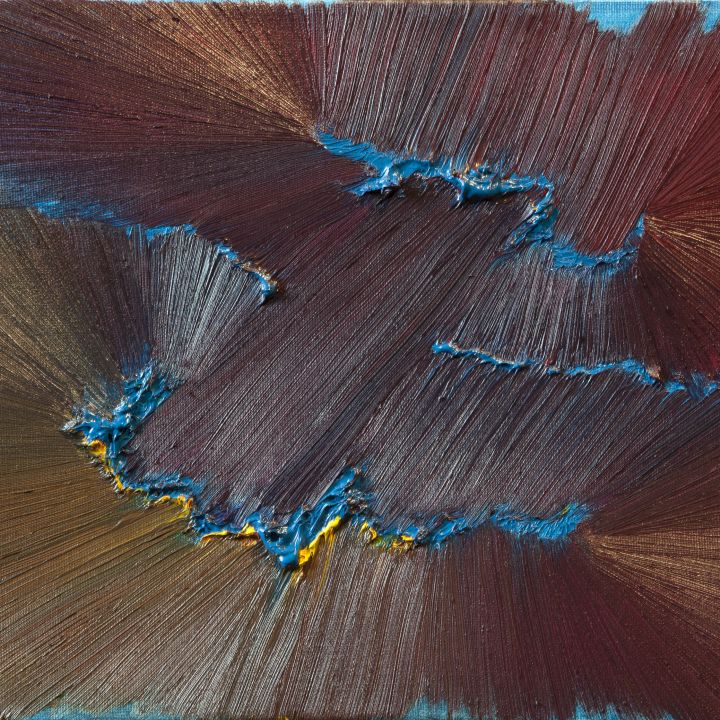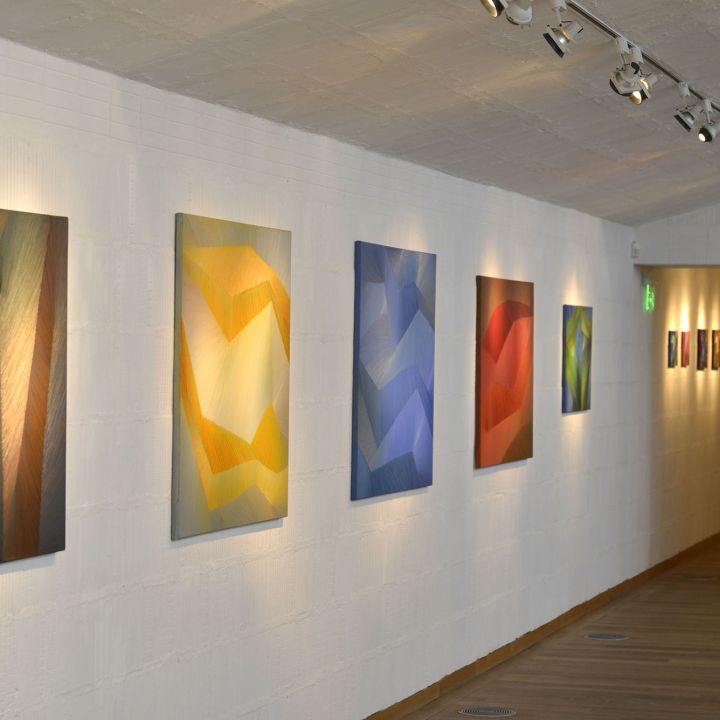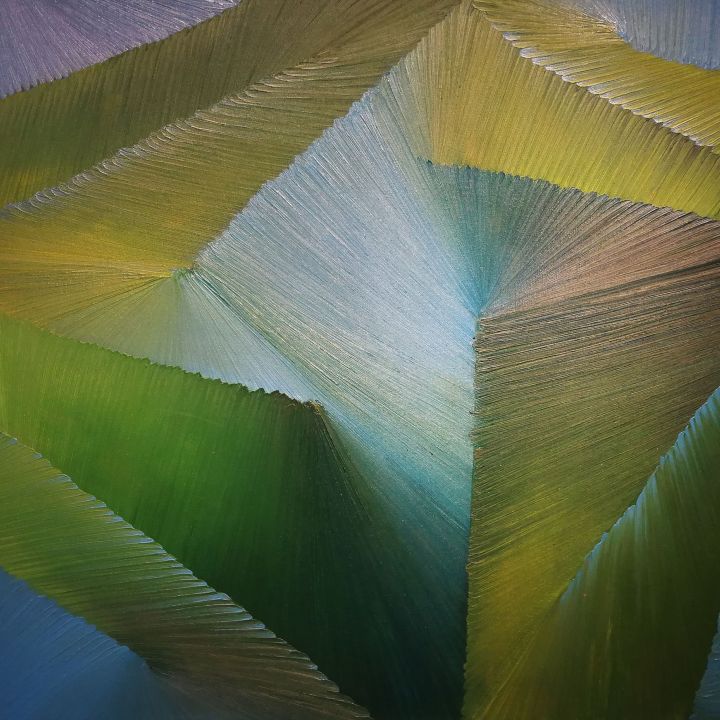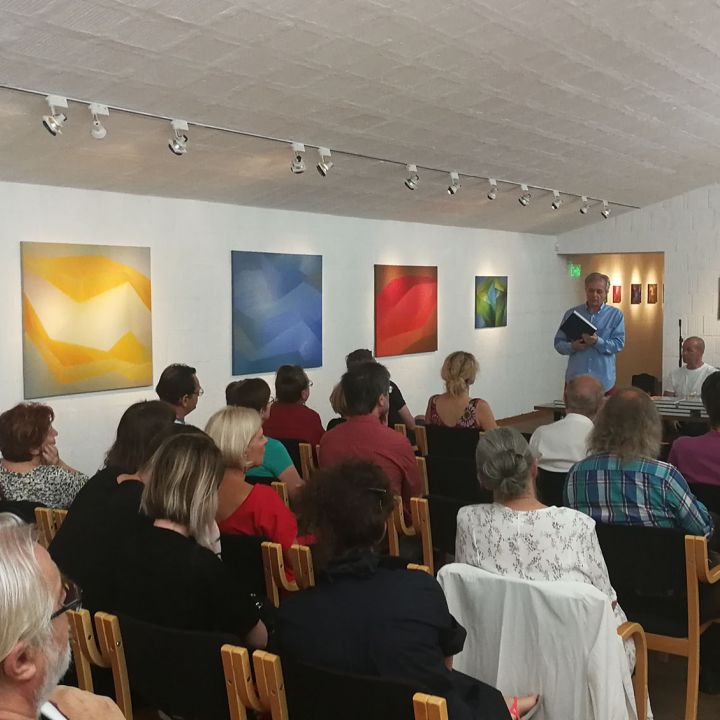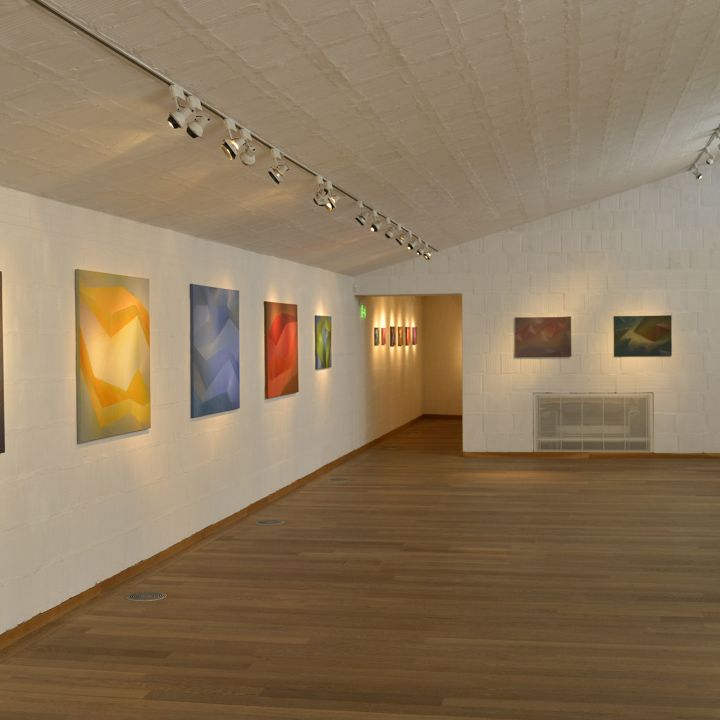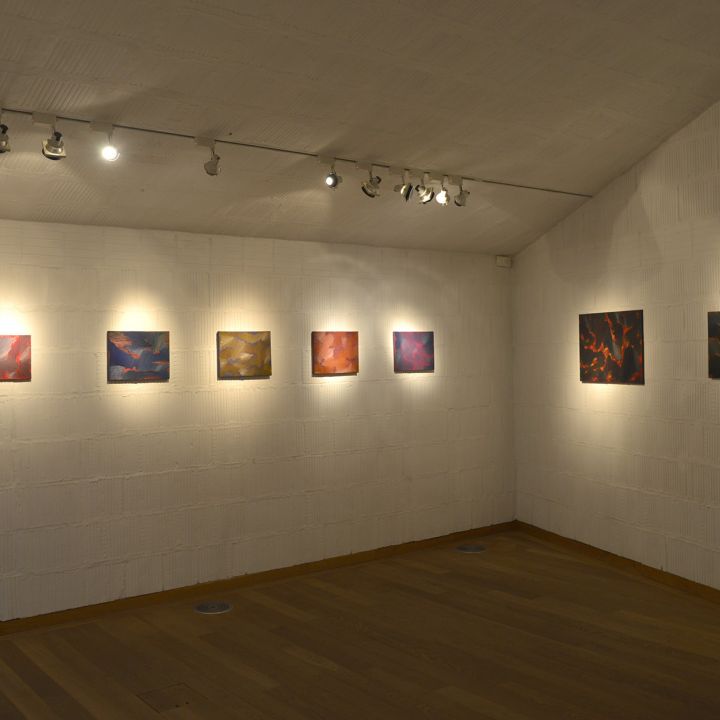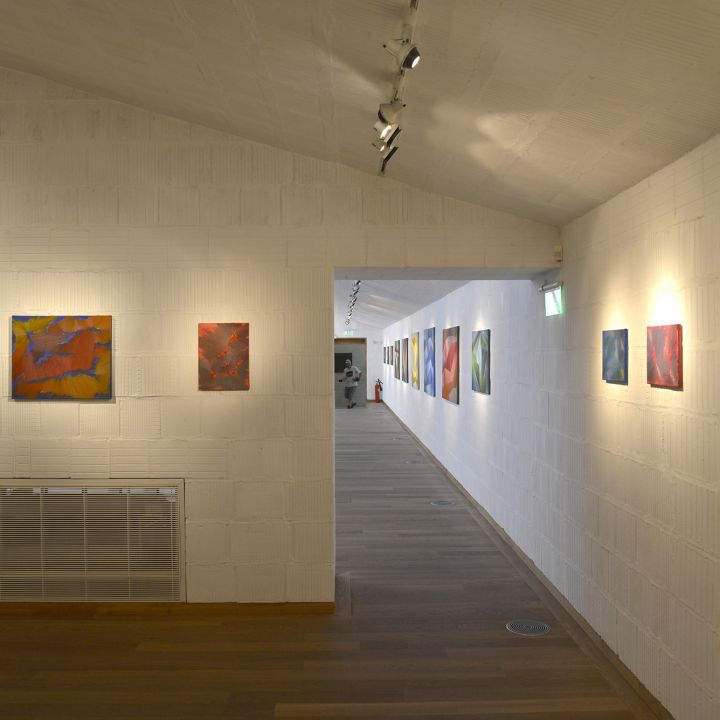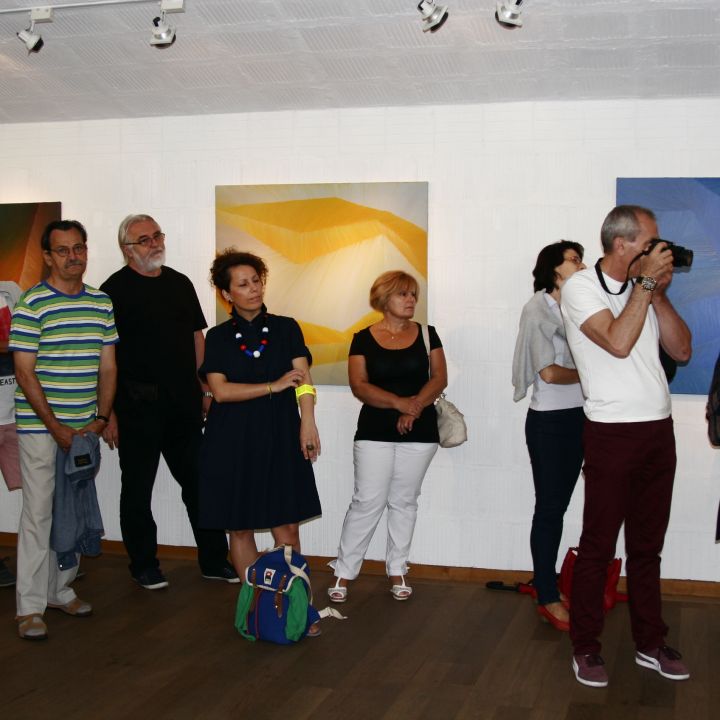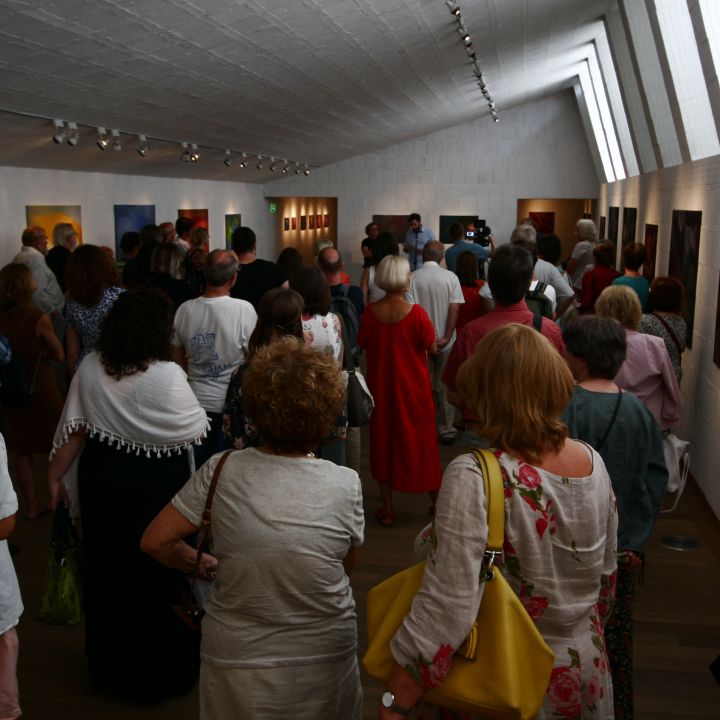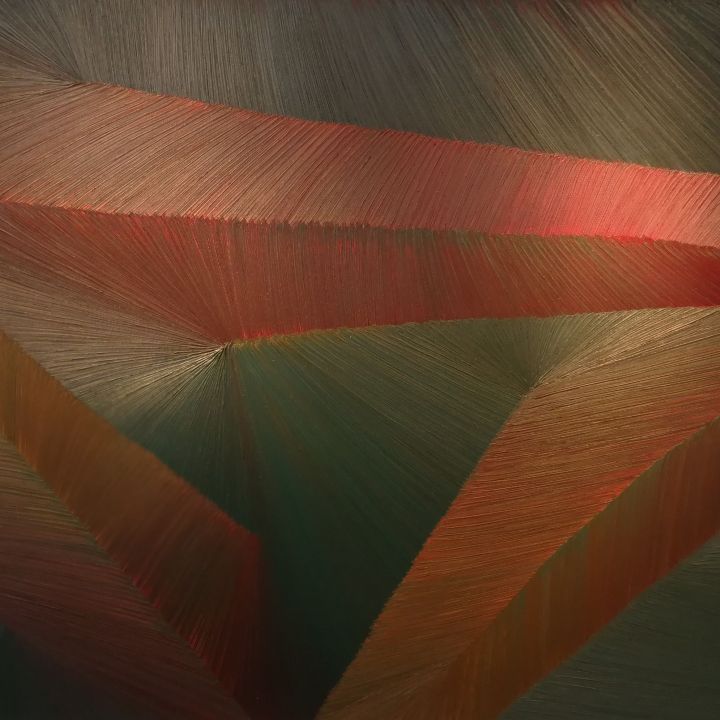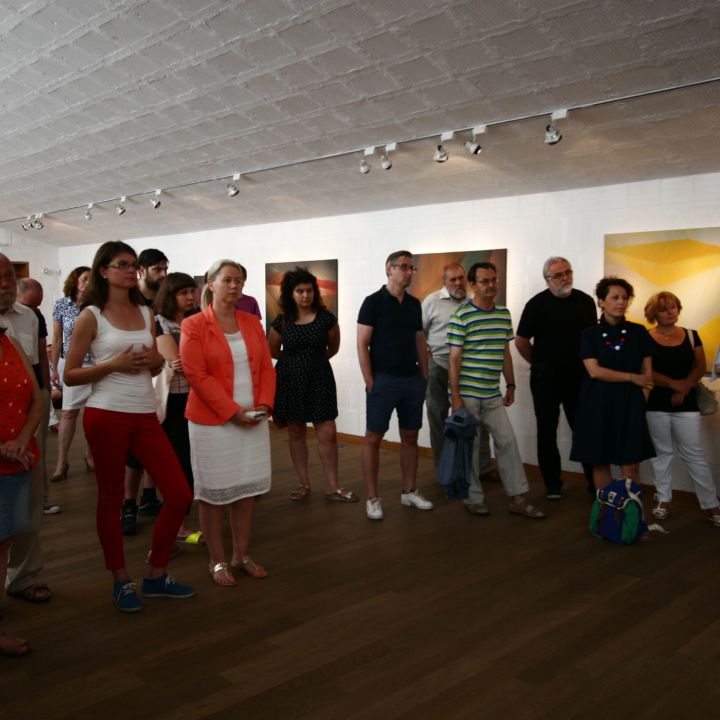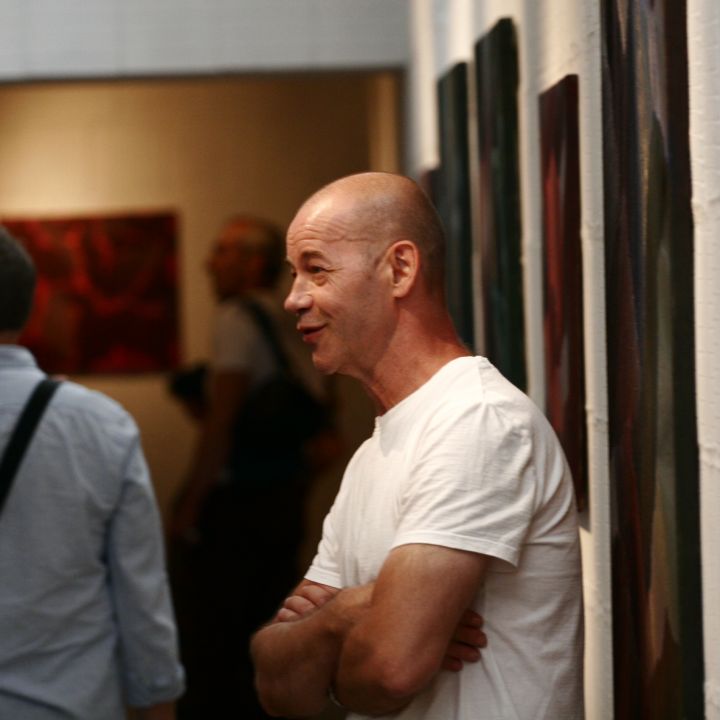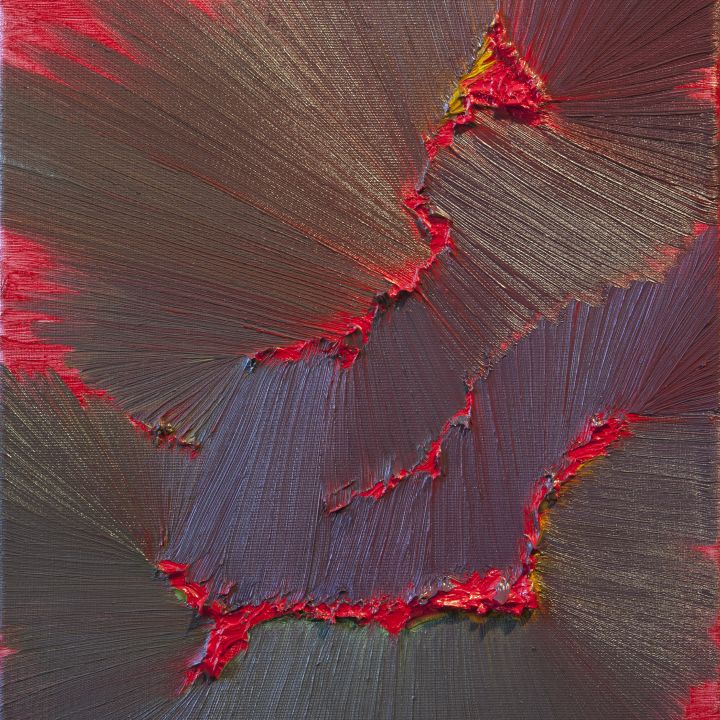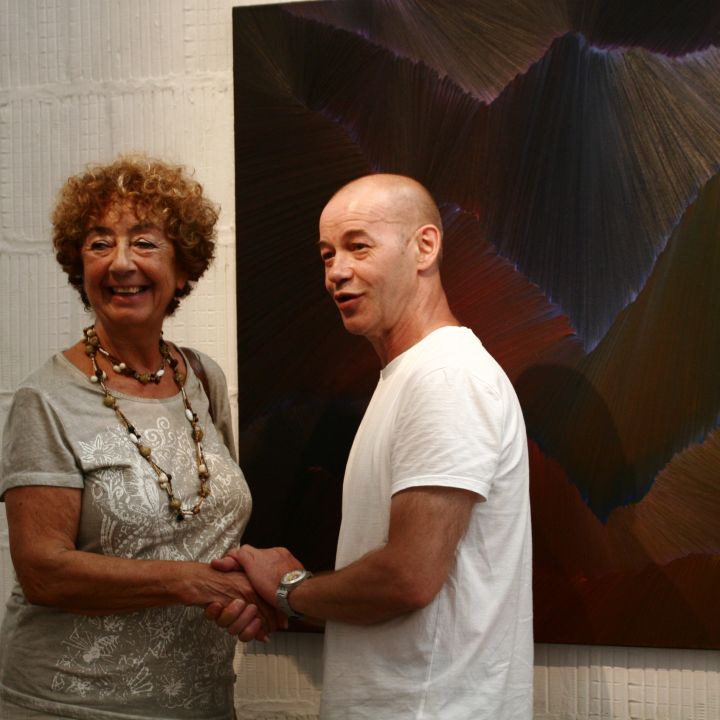Bernat is one of the most outstanding artists of his generation whose career - surprisingly and in contrast to his contemporaries - is unbroken. In all senses of the word he is naturally in touch with the results of the national and international trends of the last twenty-five years, so that a monographic picture of this career also provides an opportunity to formulate the Hungarian and universal painting trends of the period.
"András Bernát was involved in the development of new painting in Hungary early on, as a college student, together with Zoltán Ádám, József Bullás and István Mazzag.
He found his own forms of expression relatively quickly. Based on the traditions of Turner and the French Impressionists, he developed a pantheistic approach to nature, which with some exaggeration, could be called Abstract Impressionism. His paintings from the mid to late 1980s, with their soft structure and traces of compositional principles reminiscent of classical landscapes, are a superimposition of traditional visual abstractions, but the full outpouring of the painterly Self perfectly dissolves the natural - or apparently natural - forms. Bernat's melancholic, lyrical abstraction at the time was an unmistakably sensual formulation of the boundary between the perceptible and the imperceptible.
At the turn of the eighties and nineties, Bernát's painting slowly lost its object references. The motifs of his paintings from then on were often large, "natural" forms reminiscent of land art, often seemingly constructed, sometimes endless, plastic waves that flow out from the small surface, not breaking but dissolving the frame. Abstraction and strict objectivity - contrary to first impressions - are simultaneously expressed in the works. His paintings, which evoke movement also capture a paradox of their own: ethereally stylized landscapes in which a kind of Turnerian storm is unleashed, unbreakable and harnessed by a relatively strong monochromaticity. In other respects, however, the images seem to me at least, as if Bernat were using them to illustrate - even involuntarily - Rainer Maria Rilke's cruelly frank and fateful words, or to interpret them as a possible 'suggestion for decipherment'. "To be alone with a dead man is not nearly as vulnerable as to be alone with the trees. However mysterious death may be, much more mysterious is a life that is not our life, in which we cannot participate, and which without noticing us celebrates its own feasts, while we look on somewhat bewildered, as accidental guests who speak another language"¬ (translated by Ede Szabó) Rilke sighs, looking at the works of the artists of Worpswede. It seems as if András Bernát had successfully painted a Rilkean celebration of landscape and nature.
In the last ten to fifteen years his paintings have in many ways "depicted" borderline situations, while at the same time they themselves - as objects to be sculpted - are embodiments of a well-meaning ambivalence.
The paintings are monochromatic, that is, they are monochromatic, but this is only an illusion, not only because there is no pure monochrome, but because András Bernát hides colours in the paint through light, and also because he mixes metallic particles with organic pigments, which turns the surface into a silky-iridescent, often opalescent-colour-changing, living body. The plane becomes a body (of course, this is one of the eternal dilemmas of painting: how to "embody" a plane), but here this happens without the artist mechanically fiddling with perspective; at first glance the mere shift of light and perspective creates a lyrical-artistic illusion, but a closer look at the spectacle reveals that unconstructed, unpresented geometric situations create the embodiment. Spatial elements that are dry, but not calculated or finite, emerge from the colour without one becoming more important at the expense of the other.
Movement in the paintings referring to the infinite in the bounded is generated by light, and light is both dependent on and independent of the viewer. By changing the position of the viewer - by moving himself - the pictorial place and position fixed on the canvas is moved. The swirl of brushstrokes unfolds kineticism and illusionism on the one hand and the soft play of chance on the other." István Hajdu

